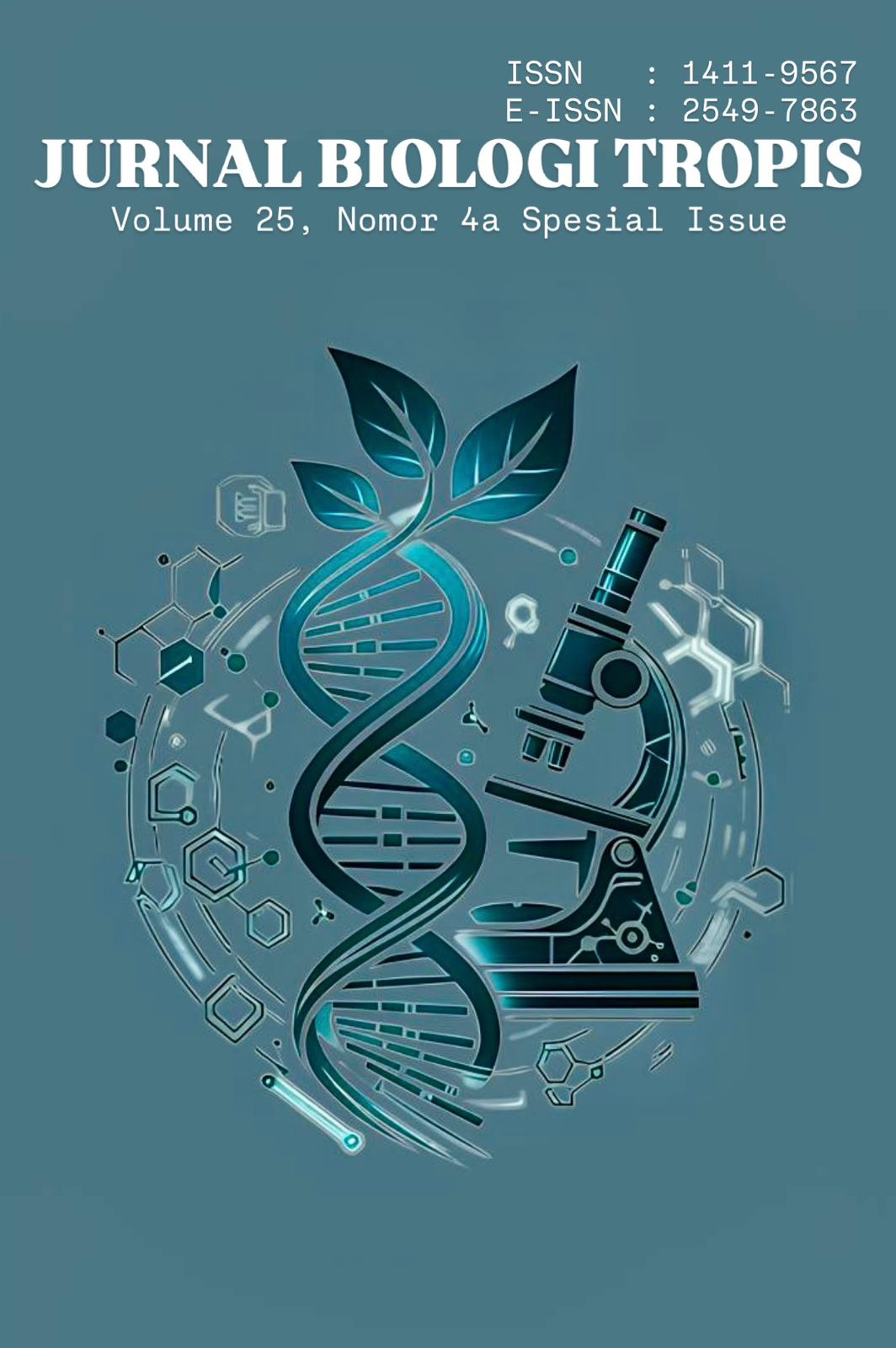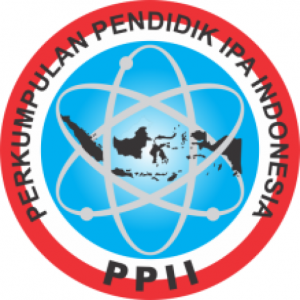Literature Review: The Potential of Local Alternative Feeds for Sustainable Pig Farming in Tana Toraja
Authors
Fitha Febrilia Ruli , Besse KhalidatunnisaDOI:
10.29303/jbt.v25i4a.10336Published:
2025-11-04Issue:
Vol. 25 No. 4a (2025): Special IssueKeywords:
alternative feed, fermentation, pig farming, sustainability.Articles
Downloads
How to Cite
Downloads
Metrics
Abstract
Pig farming in Tana Toraja, Indonesia, plays a crucial role in both food security and socio-cultural traditions. However, the rising cost of commercial feed poses a significant challenge for farmers, driving the need for affordable alternative feed sources. This literature review aims to evaluate the potential of locally available alternative feed sources in Tana Toraja, focusing on cassava peels, banana stems, and sweet potato leaves, to provide a sustainable and affordable solution for pig farmers in the region. The study was conducted through a systematic analysis of scientific literature to assess the nutritional composition, benefits, and limitations of these alternative feeds. The results indicate that incorporating these local resources can enhance the nutritional profile of pig feed, leading to improved average daily weight gain and feed conversion ratio. Furthermore, their utilization can promote better gut health, which supports growth performance. Nevertheless, the use of these local feeds faces various challenges, including the presence of anti-nutritional factors, high crude fiber content, and low crude protein levels, which are crucial for pig growth. Therefore, this review emphasizes the importance of using appropriate processing methods, as well as supplementing enzymes and specific compounds to optimize the nutritional value of these local feeds. This review is essential as a comprehensive reference for pig farmers in Tana Toraja to utilize local alternative feeds to overcome high feed costs while supporting environmental sustainability by utilizing agricultural waste.
References
Adesehinwa, A. O. K., Boladuro, B. A., Dunmade, A. S., Idowu, A. B., Moreki, J. C., & Wachira, A. M. (2024). — Invited Review — Pig production in Africa: current status, challenges, prospects and opportunities. Animal Bioscience, 37(4), 730–741. https://doi.org/10.5713/ab.23.0342
Ali, B. M., van Zanten, H. H. E., Berentsen, P., Bastiaansen, J. W. M., Bikker, P., & Lansink, A. O. (2017). Environmental and economic impacts of using co-products in the diets of finishing pigs in Brazil. Journal of Cleaner Production, 162, 247–259. https://doi.org/10.1016/j.jclepro.2017.06.041
Arjin, C., Souphannavong, C., Sartsook, A., Seel-audom, M., Mekchay, S., & Sringarm, K. (2020). Efficiency of Fresh and Fermented Banana Stem in Low Protein Diet on Nutrient Digestibility, Productive Performance and Intestinal Morphology of Crossbred Pig ((Thai native x Meishan) x Duroc). Veterinary Integrative Sciences, 19(1), 51–64. https://doi.org/10.12982/VIS.2021.005
Atus, S., Widayati, T. W., Supriyantono, A., Randa, Y. S., & Iyai, D. A. (2022). Pig Farming System in West Papua: A Case Study of Three Districts. Annals of Agricultural Science and Research, 1(1), 1–10.
Bandara, W., & Syed, R. (2024). The role of a protocol in a systematic literature review. Journal of Decision Systems, 33(4), 583–600. https://doi.org/10.1080/12460125.2023.2217567
Bayitse, R., Tornyie, F., & Ali, E. B. (2024). Food and feed potentials of cassava peels using fermentation technologies. In Sustainable Cassava (pp. 345–359). Elsevier. https://doi.org/10.1016/B978-0-443-21747-0.00002-3
Diarra, S. S., & Devi, A. (2015). Feeding Value of Some Cassava By-Products Meal for Poultry: A Review. Pakistan Journal of Nutrition, 14(10), 735–741. https://doi.org/10.3923/pjn.2015.735.741
Diarra, S. S., Omelanga, F., Waedala, H., Niufilia, E., Prasad, H., & Manu, L. (2018). Allzyme SSF supplementation improves the utilization of sweet potato (Ipomoea batatas) vine meal by growing pigs. Journal of Applied Animal Research, 46(1), 583–586. https://doi.org/10.1080/09712119.2017.1363048
Etonihu, A. C., Olajubu, O., Ekanem, E. O., & Bako, S. S. (2011). Titrimetric Evaluation of Cyanogens in Parts of Some Nigerian Cassava Species. Pakistan Journal of Nutrition, 10(3), 260–263. https://doi.org/10.3923/pjn.2011.260.263
Huy, S., Khieu, B., Chhay, T., Philp, J. N. M., Le, N. D., & Tran, H. T. T. (2021). Response in digestibility, growth performance, and carcass quality of local Kandol pigs to incremental levels of fermented banana stems. Tropical Animal Health and Production, 53(1), 110. https://doi.org/10.1007/s11250-020-02488-z
Huynh, N.-H. T., Trung, L. D., Phung Loc, N., Duong, D. V., & Tran, T. (2023). Circular Economy Approach: Cultivating Grey Oyster Mushroom using Cassava (Manihot esculenta) Peel Waste from Starch Production. E3S Web of Conferences, 405, 01009. https://doi.org/10.1051/e3sconf/202340501009
Jayasinghe, C. V. L., Rajapakse, H. U. K. D. Z., Kithmini, N. K. S., Senevirathne, S. S., Wanigasinghe, H. G., Kulathunga, K. M. P. M., & Jayatilake, S. (2024). Valorization of Banana Waste and Its Applications in Food Packaging. In Agro-Wastes for Packaging Applications (pp. 105–140). CRC Press. https://doi.org/10.1201/9781003453277-6
Jumare, F. I., Salleh, M. Md., Ihsan, N., & Hussin, H. (2024). Cassava waste as an animal feed treatment: past and future. Reviews in Environmental Science and Biotechnology, 23(3), 839–868. https://doi.org/10.1007/s11157-024-09701-7
Li, P., Ji, S., Wang, Q., Qin, M., Hou, C., & Shen, Y. (2017). Adding sweet potato vines improve the quality of rice straw silage. Animal Science Journal, 88(4), 625–632. https://doi.org/10.1111/asj.12690
Malsawmthangi, S., Kukde, R. J., & Samanta, A. K. (2015). Effect of diet containing sweet potato (Ipomoea batatas) meal on nutrient utilization and growth performance of indigenous growing pigs. Indian Journal of Animal Research, OF. https://doi.org/10.18805/ijar.7492
Ojediran, T. K., Afolabi, T. S., Olayiwola, S. F., Oyetoro, B. A., Olayeni, T. B., & Emiola, I. A. (2024). High-quality-cassava peel meal: Impact on growth performance, blood characteristics, and economic indices of grower pigs. Thai Journal of Agricultural Science, 57(2), 58–71.
Okpako, C. E., Ntui, V. O., Osuagwu, A. N., & Obasi, F. I. (2008). Proximate composition and cyanide content of cassava peels fermented with Aspergillus niger and Lactobacillus rhamnosus. Journal of Food, Agriculture and Environment, 6(2), 251–255.
Pillai, G. S., Morya, S., Khalid, W., Khalid, M. Z., Almalki, R. S., & Siddeeg, A. (2024). Banana Pseudostem: An Undiscovered Fiber Enriched Sustainable Functional Food. Journal of Natural Fibers, 21(1). https://doi.org/10.1080/15440478.2024.2304004
Rochana, A., Dhalika, T., Budiman, A., & Kamil, K. A. (2017). Nutritional Value of a Banana Stem (Musa paradisiaca Val) of Anaerobic Fermentation Product Supplemented With Nitrogen, Sulphur and Phosphorus Sources. Pakistan Journal of Nutrition, 16(10), 738–742. https://doi.org/10.3923/pjn.2017.738.742
Sudharmono, Ekawati, A. W., & Setijawati, D. (2016). Fermented Cassava Peel Evaluation. International Journal of ChemTech Research, 9(07), 421–426.
Tang, C.-C., Ameen, A., Fang, B.-P., Liao, M.-H., Chen, J.-Y., Huang, L.-F., Zou, H.-D., & Wang, Z.-Y. (2021). Nutritional composition and health benefits of leaf-vegetable sweet potato in South China. Journal of Food Composition and Analysis, 96, 103714. https://doi.org/10.1016/j.jfca.2020.103714
Teixeira, S. M. P., Maduro Dias, C. S. A. M., Vouzela, C. F. M., Madruga, J. S., & Borba, A. E. S. (2021). Nutritive characterization of Musa spp and its effects on in vitro Rumen fermentation characteristics. Agronomy Research, 19(4), 2050–2056. https://doi.org/10.15159/AR.21.100
Tonga, Y., Sutapa, I. G., Yudiastari, N. M., Suariani, L., Ama, D. T., & Jati, I. G. (2023). Performance of Balinese Pigs Feed Traditional and Fermented Feed in Sukanadi Farmer Women’s Group. International Journal of Scientific Multidisciplinary Research, 1(9), 1151–1160. https://doi.org/10.55927/ijsmr.v1i9.6314
Tonukari, N. J., Oliseneku, E. E., Avwioroko, O. J., Aganbi, E., Orororo, O. C., & Anigboro, A. A. (2016). A novel pig feed formulation containing Aspergillus niger CSA35 pretreated-cassava peels and its effect on growth and selected biochemical parameters of pigs. African Journal of Biotechnology, 15(19), 776–785. https://doi.org/10.5897/AJB2015.15181
Udeme, N., Okafor, P., & Eleazu, C. (2017). Evaluation of the distribution of cyanide in the peels, pulps and leaves of three new yellow cassava (Manihot esculenta Crantz) varieties for potential livestock feeds. Progress in Nutrition, 19(1-S), 137–141.
Ullo, N. Z. A., Yoku, O., Monim, H., Widayati, T. W., & Kayadoe, M. (2023). Reducing the effects of greenhouse gas emissions of organic waste by utilizing banana stems as starter local pig feed. IOP Conference Series: Earth and Environmental Science, 1192(1), 012044. https://doi.org/10.1088/1755-1315/1192/1/012044
Williams, G. A., Akinola, O. S., Adeleye, T. M., Irekhore, O. T., Lala, A. O., Oso, A. O., & Williams, O. K. (2023). Influence of Processed Cassava Peel-leaf Blend as Replacement for Maize on Growth Performance and Serum Parameters of Growing Pigs. Asian Journal of Dairy and Food Research, 42(2), 161–167. https://doi.org/10.18805/ajdfr.DRF-278
Williams, G. A., Akinola, O. S., Adeleye, T. M., Irekhore, O. T., Oso, A., Ogunrombi, J., & William, O. (2023). Dietary replacement of processed cassava peel-leaf blends for maize: Impact on growth performance and blood parameters of growing pigs. ANIMAL SCIENCE AND GENETICS, 19(1), 39–54. https://doi.org/10.5604/01.3001.0016.3140
Zendrato, D. P., Hasan, F., Hanafi, N. D., Henuk, Y. L., & Daulay, A. H. (2020). The utilization of cassava by-products into complete ration on performances and feed digestibility of weaning male crossbred Landrace pigs. IOP Conference Series: Earth and Environmental Science, 454(1), 012052. https://doi.org/10.1088/1755-1315/454/1/012052
Zhang, J., Yue, Z., Sun, Y., Wang, Z., Zhang, Y., Huang, L., Tu, J., Shi, B., Shan, A., & Ma, Q. (2022). Effects of sweet potato vine silage supplementation on growth performance, nutrient digestibility, and intestinal health in finishing pigs. Czech Journal of Animal Science, 67(6), 218–227. https://doi.org/10.17221/209/2021-CJAS
License
Copyright (c) 2025 Fitha Febrilia Ruli, Besse Khalidatunnisa

This work is licensed under a Creative Commons Attribution 4.0 International License.

Jurnal Biologi Tropis is licensed under a Creative Commons Attribution 4.0 International License.
The copyright of the received article shall be assigned to the author as the owner of the paper. The intended copyright includes the right to publish the article in various forms (including reprints). The journal maintains the publishing rights to the published articles.
Authors are permitted to disseminate published articles by sharing the link/DOI of the article at the journal. Authors are allowed to use their articles for any legal purposes deemed necessary without written permission from the journal with an acknowledgment of initial publication to this journal.


























